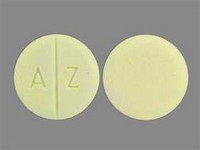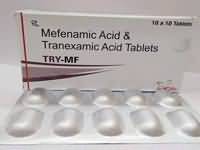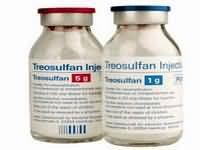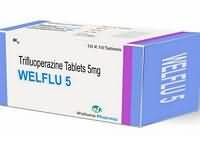Azathioprine

Azathioprine
CLINICAL USE
Immunosuppressive:
Prophylaxis of transplant rejection Treatment of various auto-immune conditions DOSE IN NORMAL RENAL FUNCTION
1–5 mg/kg/day PHARMACOKINETICS
Molecular weight :277.3 %Protein binding :<30 %Excreted unchanged in urine : <2 Volume of distribution (L/kg) :0.55–0.8half-life – normal/ESRD (hrs) :3–5/Increased DOSE IN RENAL IMPAIRMENT
GFR (mL/MIN)
20 to 50 : Dose as in normal renal function 10 to 20 : 75–100% <10 : 50–100% DOSE IN PATIENTS UNDERGOING RENAL REPLACEMENT THERAPIES
CAPD :Dialysed. Dose as in normal renal function HD :Dialysed. Dose as in normal renal functionHDF/high flux :Dialysed. Dose as in normal renal functionCAV/VVHD :Dialysed. Dose as in normal renal function IMPORTANT DRUG INTERACTIONS
Potentially hazardous interactions with other drugsAllopurinol: enhances effect with increased toxicity. Reduce azathioprine dose by 50–75% if administered concomitantlyAntibacterials: increased risk of haematological toxicity with co-trimoxazoleAnticoagulants: possibly reduced anticoagulant effect of coumarinsAntipsychotics: avoid concomitant use with clozapineCiclosporin: ?decreased ciclosporin absorption and bioavailabilityCytotoxic agents may be additive or synergistic in producing toxicity, particularly on the bone marrow ADMINISTRATION
Reconstition
Add 5 mL water for injection to each vial (50 mg) Route
Oral, IV Rate of Administration
Over not less than 1 minute Comments
Some units dilute to 100 mL sodium chloride or glucose 5% and infuse over 1 hour. IV bolus peripherally, preferably in the side arm of a fast-running infusionVery irritant to veins. Flush with 50 mL sodium chloride 0.9% after administrationTake tablets with or after food OTHER INFORMATION
Extensively metabolised to mercaptopurine1 mg by IV injection is equivalent to 1 mg by oral route6-mercaptopurine levels can be monitored in patients with low urate clearanceMonitor white cell and platelet counts Cytotoxic Drug – Do Not Handle Can be given as an intermittent infusion (up to 250 mg in 100 mL)About 40–60% is removed by haemodialysis.
See how to identify renal failure stages according to GFR calculation
See how to diagnose irreversible renal disease
Home









